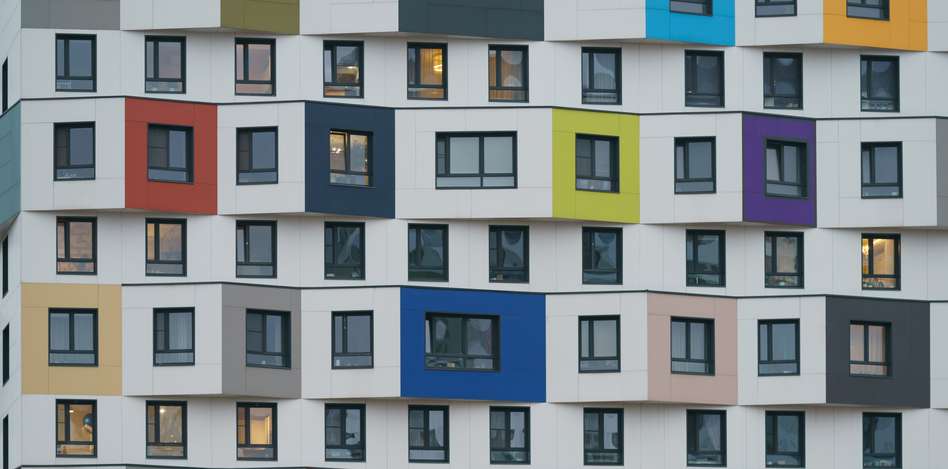Building Safety Act: leaseholder and landlord certificates

What is the Building Safety Act 2022?
The Building Safety Act 2022 is new legislation which has brought major changes to give homeowners and tenants more rights, powers and protection so that homes will be safer all over the country.
If you are a landlord, please refer to our article Building safely act and fire safety act 2022: implications for landlords
Building Safety Act 2022 summary
The Act came into force in June 2022, largely in response to the issues brought to light following the tragic Grenfell disaster, which left some leaseholders facing huge bills to remedy building defects to make buildings safe and preserve the financial value of their properties.
A key part of the legislation is to deliver strong protection for qualifying leaseholders from the costs of fixing historical defects and safety problems (such as unsafe external cladding). It makes sure those responsible for past faults are held accountable instead.
What leases qualify for protection?
What is a Leaseholder Deed of Certificate?
What should I expect from my landlord or building owner?
What are the leaseholder protections in the building safety act 2022?
The leaseholder protections came into force on 28 June 2022, with new financial protections for leaseholders in relevant buildings with relevant historical safety defects.
The law now requires those who constructed faulty buildings to take responsibility for fixing them, while also granting legal protection to leaseholders from exorbitant bills for historical safety problems.
The government is firm that developers must pay for repairing buildings they were involved in building or renovating, even if they don't own the building anymore. The law holds building owners or those associated with the developer, responsible for paying for the remediation of historical safety defects.
Courts now have expanded powers to impose liability on related companies, so that legal cases for claims against defective buildings can be brought against companies linked to the developer, preventing them from escaping responsibility by using complex corporate structures.
In cases where a developer can't be found or has not yet agreed to pay for their own buildings, funds will be provided directly, to cover the cost of fixing cladding systems and remediation, ensuring that no eligible leaseholder has to bear the expense.
Eligible leaseholders are protected from all external cladding system remediation costs. Leaseholders whose property is valued at less than £325,000 in Greater London (£175,000 in other parts of England) or whose building owner has a group net worth of more than £2 million per building as of 14 February 2022, are exempt from historical safety remediation costs.
The law sets a firm cap on contributions from eligible leaseholders for non-cladding defects and interim measures (including the costs of trained personnel to detect and respond to any potential fire hazards i.e: "waking watch" costs), spread over 10 years, with costs already paid since 28 June 2017 counting towards the cap. If the remediation costs exceed the cap, building owners must make up the difference.
The law includes strong measures to ensure those responsible finally rectify dangerous buildings they contributed to and to protect leaseholders from the unjust costs of remediation they previously faced.
What leases qualify for protection?
There are criteria which must be met in order for a leaseholder to benefit from the protections created by the Act:
- The lease must be for a single dwelling within a building of above 11 metres high or at least five storeys
- The lease must be for more than 21 years
- The leaseholder must pay a service charge
- The lease must have begun before 14 February 2022 and as of 14 February 2022, either:
a) the dwelling must have been the leaseholder’s only or main home; or
What is a Leaseholder Deed of Certificate?
A lease must have satisfied each of these criteria as of 14 February 2022 to qualify for protection and, as evidence of this, the status of a lease on that key date must now be documented in a Leaseholder Deed of Certificate.
The Leaseholder Deed of Certificate will demonstrate whether the leaseholder can be responsible for paying for remediation works. Where the leaseholder can be asked to pay for these works, it enables building owners to calculate the cap on those costs.
The Leaseholder Deed of Certificate contains a series of questions and answers which assess whether the lease meets the required criteria for protection for example:
- It must contain details of the current leaseholder,
- who the leaseholder was on 14 February 2022,
- the price the property was last sold for
- and whether the lease is a shared ownership lease.
There may also be required additional documents that must accompany the Deed of Certificate, such as evidence of past sales of the property and the price paid.
Notwithstanding the importance of the Leaseholder Deed of Certificate for protecting leaseholders from repair costs, requests for deeds of certificate will become routine in conveyancing transactions and leaseholders planning to sell their properties should be aware of this and prepare in advance if possible.
What should I expect from my landlord or building owner?
The Leaseholder Deed of Certificate outlines the cap on costs the leaseholder can be asked to pay. Equally, a Landlord Certificate is a new requirement under the Building Safety (Leaseholder Protections) (England) Regulations 2022 and contains parallel information to calculate how much the landlord can charge leaseholders for building-safety works.
The Landlord Certificate acts as a permanent record as to the status of the lease on 14 February 2022 and must contain details about the current landlord, who the landlord was on 14 February 2022, their involvement in commissioning the defective work and any remediation works which have been carried out previously.
The landlord must provide leaseholders with a Landlord Certificate in the following circumstances:
- When the landlord wants to pass on any costs for repairing defects onto a leaseholder through the service charge
- Within four weeks from receiving notification from a leaseholder that the leaseholder intends to sell their property
- Within four weeks of the landlord becoming aware of a relevant defect which was not covered by a previous Landlord Certificate; or
- Within four weeks of a leaseholder requesting a Landlord Certificate.
As with the Leaseholder Deed of Certificate, the Landlord Certificate will also become a necessity in conveyancing transactions and requests for them will become routine.
Leaseholders that are planning to sell their properties should ensure they request a Landlord Certificate as early as possible in the transaction, if not prior to finding a seller, to minimise any potential delays while landlords deal with requests and preparation of the certificates.
Tees are here to help
We have many specialist lawyers who are based in:
Cambridgeshire: Cambridge
Essex: Brentwood, Chelmsford, and Saffron Walden
Hertfordshire: Bishop's Stortford and Royston
But we can help you wherever you are in England and Wales.
Chat to the Author, Amy Barrington
Senior Associate, Residential Property, Bishop's Stortford office
Meet Amy
- Areas of expertise
